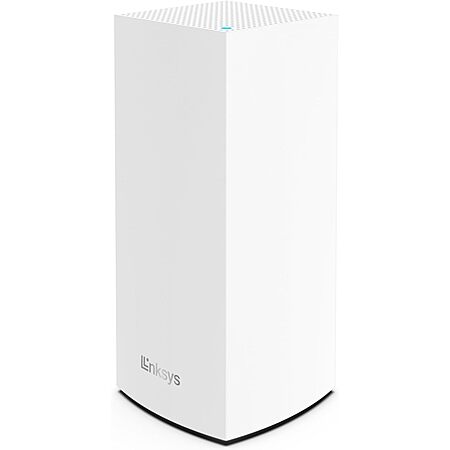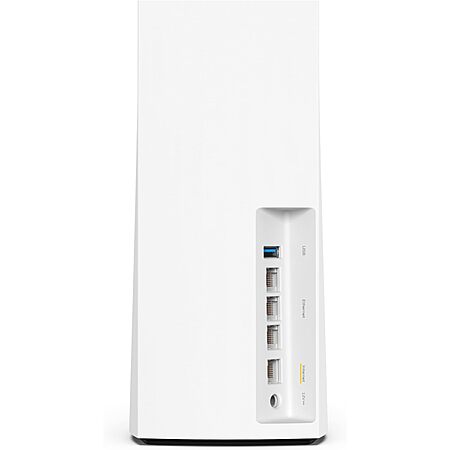Click here [dd-wrt.com] for a guide on installing DD-WRT
Download the latest DD-WRT builds from here [dd-wrt.com]
If you are not interested in using custom firmware yet, these routers support mesh with the stock firmware, but the USB port is disabled.
The stock firmware is relatively new, but is speculated to not receive many, if any, updates, so it may be best to wait until custom firmware support is merged and more mature before messing with installing custom firmware.
How to enable mesh:
- Setup your Main router completely.
- Plug your child node using the wan port to the main router lan port, wait for a solid purple light on the child node before proceeding.
- Log into your main router web admin.
- Click on CA at the bottom right.
- Click on Connectivity and CA Router setup.
- Click on both Add Wired and Add Wireless nodes buttons. Wait for the Add wireless button to re-enable.
- Click Done adding Child Nodes and then Apply.
- Now the child node light should start flashing purple and turn into a mesh mode when it turns blue.
- Disconnect Ethernet and wait for blue light again.
- Move node to desired location.
How to set up as access point:
- Disable DHCP (optional).
- Set the device to Bridge Mode under Connectivity tab.
- Connect cable from your router to a LAN port.
- Get some nail polish and a round sticker to cover the annoying flashing right light.
- Click the 'CA' at the bottom of the page to see the detailed configurations of wifi.
to unbrick and flash new firmware
run flashimg
run flashimg2
rename stock firmware to tortuga.img



Leave a Comment
Top Comments
Mind you that I only have 100Mbps Spectrum internet but I do stream/direct play 4k videos from a Plex media server to several Amazon Firestick 4k devices without issue. Overall IMO you would be hard pressed to find such relatively decent hardware for so cheap; especially a Mesh network.
It wasn't all smooth at first mind you. I kept getting disconnects; especially with the streaming IP cameras. But I discovered by disabling Express Forwarding all my streaming issues went away. (CA>Connectivity>Administration>Express Forwarding)
I'm guessing that Cisco's/Linksys' proprietary Express Forwarding routing protocol was causing havoc with the IP cams streaming capabilities. Also, disabling Node Steering seemed to make things more stable as well; mesh nodes no longer disconnect from the router when Node Steering is disabled. (CA>Wi-Fi Settings>Advanced>Node Steering)
Of course, user experience can vary so feel free to experiment. if the routers are giving you problems, try turning these features off and see if it works
It's not a deal if you never receive it.
1,239 Comments
Sign up for a Slickdeals account to remove this ad.
It's not a deal if you never receive it.
Sign up for a Slickdeals account to remove this ad.
Ordered on September 3, 2024 around 1600 EST.
Said it will be here between 5th and 9th via UPS
Even with USB port enabled, openwrt isn't going to be able to give this a video output from a processor that doesn't have it. So, truely no HDMI on this one.
It's a toss up whether disabling wifi will actually turn off the amplifiers on the router to save you power. Many routers see very little power savings from disabling the wifi antenna, because the amplifier isn't designed to actually be powered off.
Edit to also add: The mediocre wifi performance kinda bugs me. Like sure you can mesh them together, but it'd be nice if each individual node doesn't suck, even if this is cheap.
$45 is for the pi 4 board alone, you'll also need to add storage, a power supply, and a case would be nice too. So we are up to what, $65?
Anyways, I have verified that the power consumption of the Linksys can be lowered by disabling the WiFi bands. I used a Kasa smart socket to get the power usage values. The first 3 measurements were taken with my laptop connected to the router via Ethernet as I forgot to disconnect it:
Idle (all 3 WiFi bands enabled): 10.6-10.9W
2.4GHz only (both 5GHz bands disabled): 9.3-9.5W
All 3 WiFi bands disabled: 8.5-8.7W
Same as above but with no Ethernet connection: 7.4-7.6W *Correction: I checked back a few hours later and now it's sitting at 7.0-7.1W*
Note that I did not observe any power savings by disabling the 2.4GHz band while having one or both 5GHz bands still enabled - it was the same as the first value above.
I also observed the power usage characteristics on startup. The power consumption was 5W immediately after powering on the router. It stayed between 5.5-6.0W for a bit before jumping to 7.5W (and then increasing to the idle value above if WiFi was enabled).
Given the above, I am optimistic that the power consumption of this Linksys can be reduced further via third party firmware.
My house is wired CAT5e in all rooms, so I'm using them as wireless APs.
Sign up for a Slickdeals account to remove this ad.
Leave a Comment